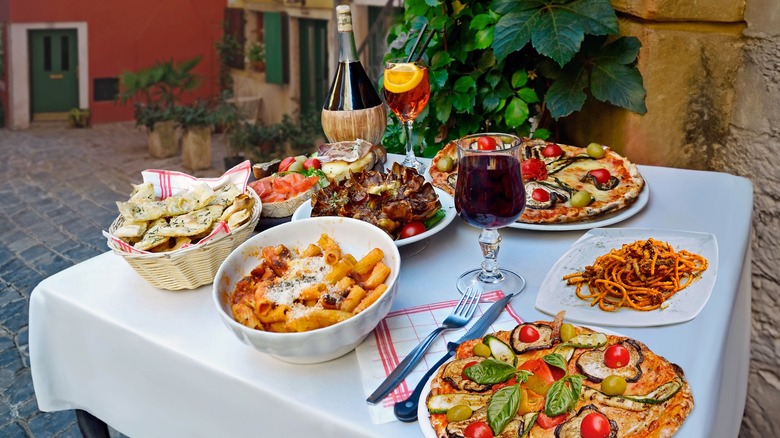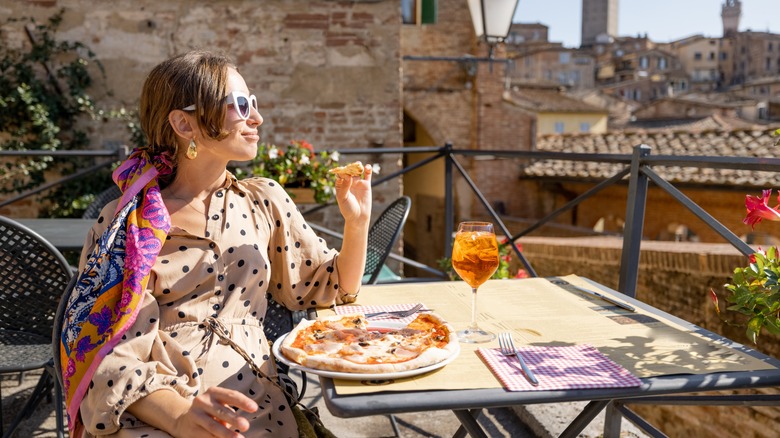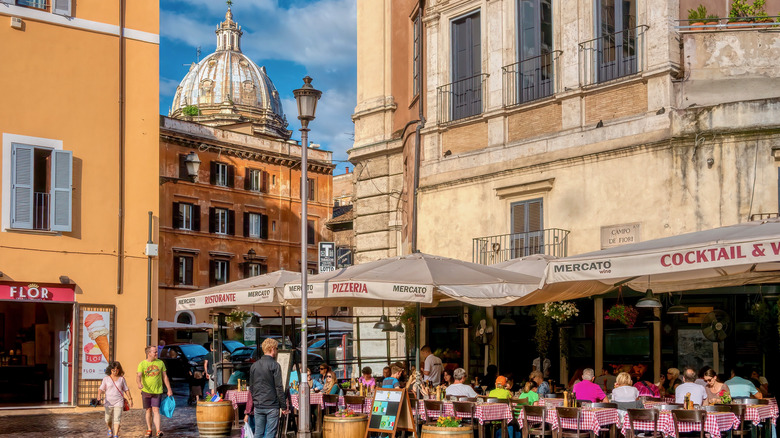Rick Steves' Unexpected TV Tip Can Help Determine If An Italian Eatery Is A Tourist Trap
TV host, author, and travel expert Rick Steves has ventured across Europe and can easily identify a tourist trap from a mile away. One of Steves' favorite spots to frequent is Italy, and he is no stranger to finding the best places to eat, drink, and explore. When it comes to dining spots, it's no secret that there are hundreds of restaurants scattered along popular historic streets where the host or hostess stops tourists to try and convince them why their restaurant is the best or most famous. However, Steves has advised his readers to be wary of places that target tourists rather than locals, because the food can be more expensive and not as good of quality.
Steves previously shared one particularly helpful hack that travelers can pay attention to when looking for an authentic spot. He noticed that when a casual restaurant has a TV playing, it's often so local employees can stop by to eat and watch something at the same time. Steves acknowledged that while eating with a TV on in the background can be a turnoff for some people, he has found some of the best and most inexpensive food options at places with a TV playing. The travel pro clarified that these places are more for a "simple meal" and not a full-on fondue. Steves also laid out a slew of other tips he has learned over the years, so people can have the most authentic Italian experience rather than falling victim to a kitschy Roman holiday.
What Rick Steves looks for in a restaurant in Italy
In a blog post titled "Tuning In to Taste Italy," Steves shared several tips about Italian dining that he's learned from his trips to the foodie hotspot. When it comes to finding a "simple meal" in Italy, Steves learned to gravitate toward places where the locals eat. One of the things he has picked up is trying to find restaurants that have a TV playing. He explained that in the past, he "never liked putting up with TV noise," but that changed after he figured out that it is often for the "local workers" to pop in for a quick bite. The non-tourist vibe "indicates a low price and a good value."
Of course, Steves had other suggestions for what typically signifies a restaurant that offers good quality and is not overly pricey. The travel pro also recommended that travelers look out for places with "self-serve antipasti buffets" that normally include offerings such as a salad bar and cooked appetizers. The experience can provide a variety of tastes and won't break the bank.
Another type of eatery Steves has approved is an "enoteca," aka a wine bar. He frequents places like this for lunch because he's found himself eating with local workers who enjoy grabbing a salad, a charcuterie selection, and, of course, a glass of wine. Finally, Steves advised his readers to always look for family-run restaurants since they don't often hire outside employees and, in return, offer good food for less money.
What Rick Steves avoids in a restaurant in Italy
In addition to sharing what he does look for in Italian restaurants, Steves also included things that his readers should be wary of when deciding on a place to eat. For instance, Steves shared that tourists should always be on the lookout for "cheap eateries that sport big color photos of pizza and piles of different pastas." He claimed that these restaurants may not even have kitchens and instead just "microwave disgusting, prepackaged food." Steves even joked that people should only dine at these types of restaurants if they enjoy "lasagna with ice in the center."
Steves added that restaurants located in the center of a famous area can often result in "bad food at high prices" since their target audience is tourists prioritizing convenience and ease over authenticity and price. He also noted that he avoids restaurants that have claimed to have invented a famous pasta dish. Steves specifically pointed out places named "Alfredo" and "Carbonara" that are normally "much more famous than they are good."
Another small yet important detail that travelers can pay attention to is the time a particular restaurant opens and closes. Europeans are known to eat later in the evening, so most local spots do not open for dinner before 7 p.m. When in doubt, Steves said that he always tries to have conversations with local Italians so they can share some of their favorite spots, the local Italian delicacies, and other things to avoid that tourists may not be thinking of.


